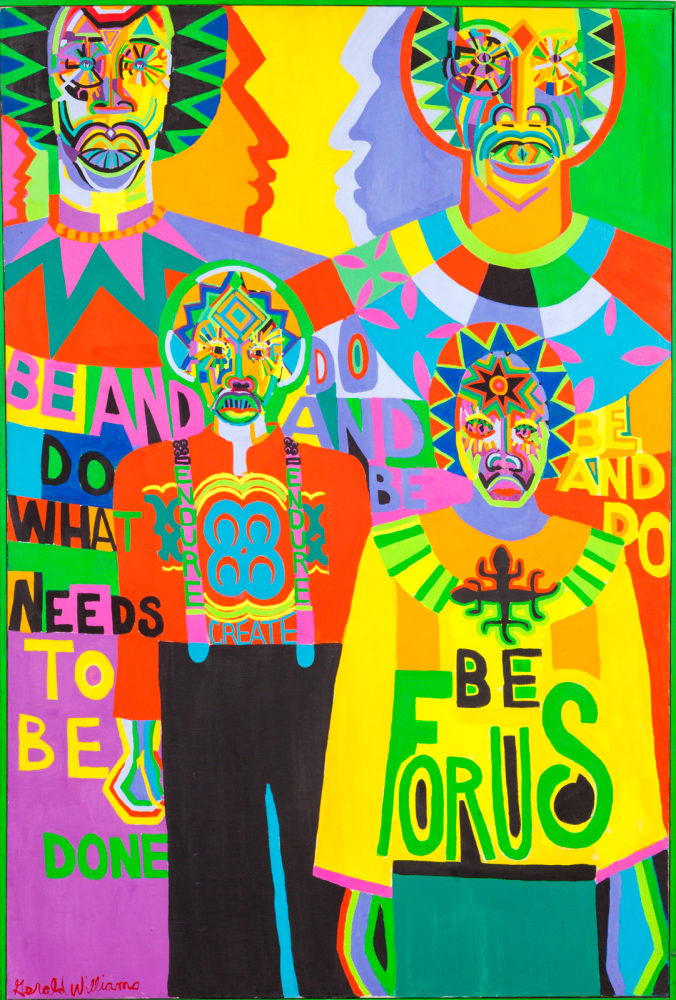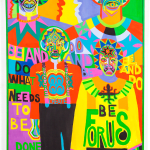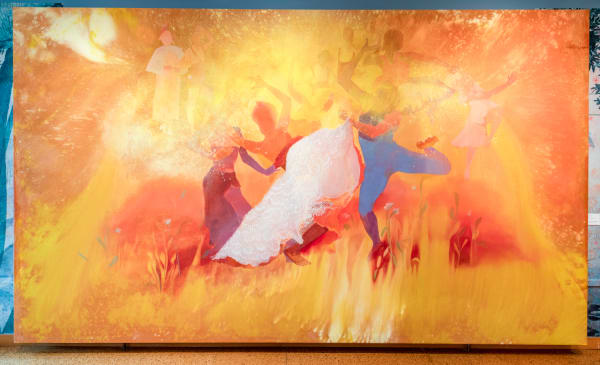Gerald Williams USA, b. 1941
Family , 1976
Acrylic on canvas
51 x 34 x 1 1/2 in
129.5 x 86.4 x 3.8 cm
129.5 x 86.4 x 3.8 cm
5825
%3Cdiv%20class%3D%22artist%22%3EGerald%20Williams%3C/div%3E%3Cdiv%20class%3D%22title_and_year%22%3E%3Cspan%20class%3D%22title_and_year_title%22%3EFamily%20%3C/span%3E%2C%20%3Cspan%20class%3D%22title_and_year_year%22%3E1976%3C/span%3E%3C/div%3E%3Cdiv%20class%3D%22medium%22%3EAcrylic%20on%20canvas%3C/div%3E%3Cdiv%20class%3D%22dimensions%22%3E51%20x%2034%20x%201%201/2%20in%3Cbr/%3E%0A129.5%20x%2086.4%20x%203.8%20cm%3C/div%3E
Further images
This painting was produced later on, in 1976, nearly a decade into the group’s existence, after Williams had completed his thesis exhibition at Howard University, where he attained his Masters...
This painting was produced later on, in 1976, nearly a decade into the group’s existence, after Williams had completed his thesis exhibition at Howard University, where he attained his Masters degree. The following year, AFRICOBRA would exhibit at FESTAC’77, the Second World Black and African Festival of Arts and Culture, in Lagos, Nigeria. Perhaps in anticipation of that larger global Pan-African conversation, this piece engages some symbolism from the Ashanti people of Ghana. The boy at the front, on the right, has an Adinkra symbol on his chest. Adinkra are sigils symbolically representing concepts or aphorisms; the one here is called funtunfunefu-denkyemfunefu, the conjoined crocodiles, a symbol of unity. The two crocodiles share a common stomach; what’s best for one is good for them all. The child on the left has mate masie, most literally meaning "What I hear, I keep," or in a more general sense, "I understand". It is a symbol of wisdom, and more specifically, the prudence to think carefully about the words of others.
Provenance
The artist's studio, Chicago, IL, USAExhibitions
Gerald Williams, 2017, Kavi Gupta, Chicago, IL, USALiterature
Gerald Williams, 2018, published by Kavi Gupta Editions
Share
- X
- Tumblr



















